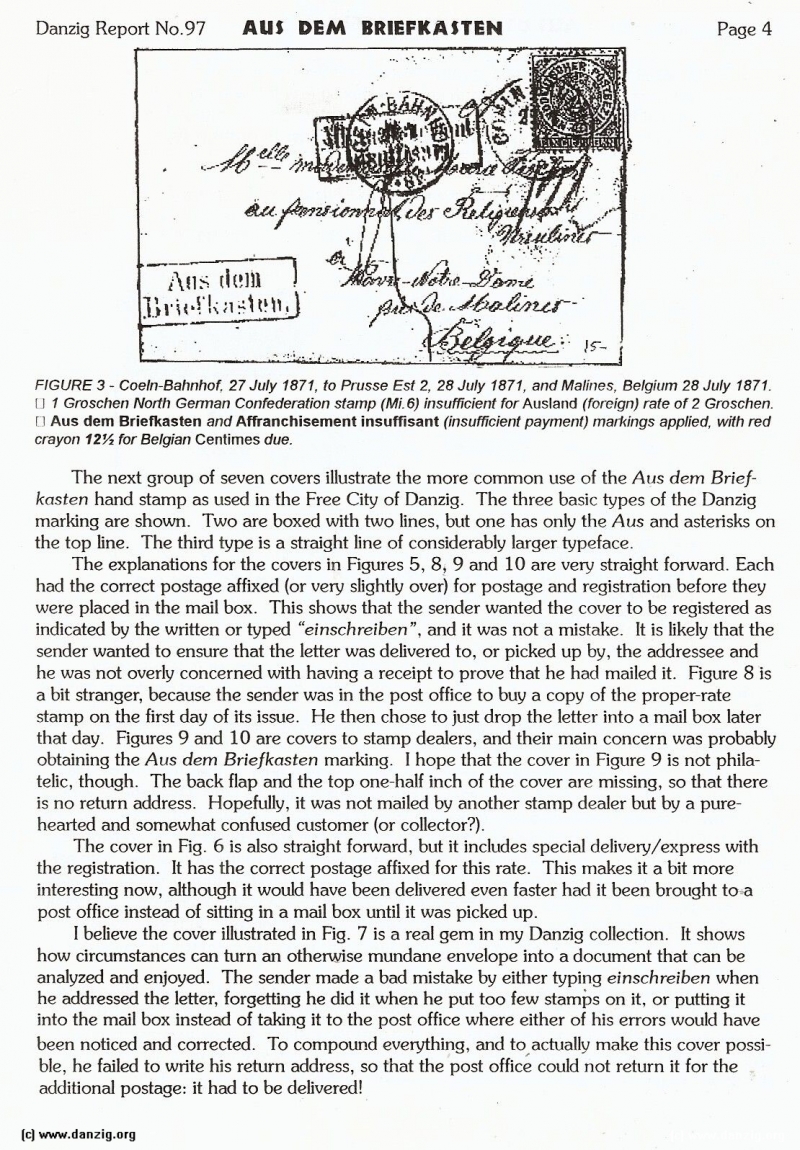
FIGURE 3 - Coeln-Bahntiof. 27 July 1871, to Prusse Est 2, 28 July 1871, and Matines, Belgium 28 July 1871.1 Groschen NoiTh German Confederation stamp (Mi. 6) insufficient for Atisland (foreign) rate of 2 Groschen.Aus dem Briefkasten and Aifranchisement insuffisant (insufficient payment) markings applied, with red crayon 12Y2 for Belgian Centimes due.
The next group of seven covers illustrate the more common use of the Aus dem Briefk asten hand stamp as used in the Free City of Danzig. The three basic types of the Danzig marking are shown. Two are boxed with two lines, but one has only the Aus and asterisks on the top line. The third type is a straight line of considerably larger typeface.
The explanations for the covers in Figures 5, 8, 9 and 10 are very straight forward. Each had the correct postage affixed (or very slightly over) for postage and registration before they were placed in the mail box. This shows that the sender wanted the cover to be registered as indicated by the written or typed “einschreiben”, and it was not a mistake. It is likely that the sender wanted to ensure that the letter was delivered to, or picked up by, the addressee and he was not overly concerned with having a receipt to prove that he had mailed it. Figure 8 is a bit stranger, because the sender was in the post office to buy a copy of the proper-rate stamp on the first day of its issue. He then chose to just drop the letter into a mail box later that day. Figures 9 and 10 are covers to stamp dealers, and their main concern was probably obtaining the Atis dem Brief kcisten marking. I hope that the cover in Figure 9 is not philat elic, though. The back flap and the top one-half inch of the cover are missing, so that there is no return address. Hopefully, it was not mailed by another stamp dealer but by a pure- hearted and somewhat confused customer (or collector?).
The cover in Fig. 6 is also straight forward, but it includes special delivery/express with the registration. It has the correct postage affixed for this rate. This makes it a bit more interesting now, although it would have been delivered even faster had it been brought to a post office instead of sitting in a mail box until it was picked up.
I believe the cover illustrated in Fig. 7 is a real gem in my Danzig collection. It shows how circumstances can turn an otherwise mundane envelope into a document that can be analyzed and enjoyed. The sender made a bad mistake by either typing einschreiben when he addressed the letter, forgetting he did it when he put too few stamps on it. or putting it into the mail box instead of taking it to the post office where either of his errors would have been noticed and corrected. To compound evetything, and to actually make this cover possib le, he failed to write his return address, so that the post office could not return it for the additional postage: it had to be delivered!
Danzig Report Vol. 1 - Nr. 97 - October - November - December - 1997, Page 5.
Hits: 3434
Added: 21/07/2015
Copyright: 2025 Danzig.org

